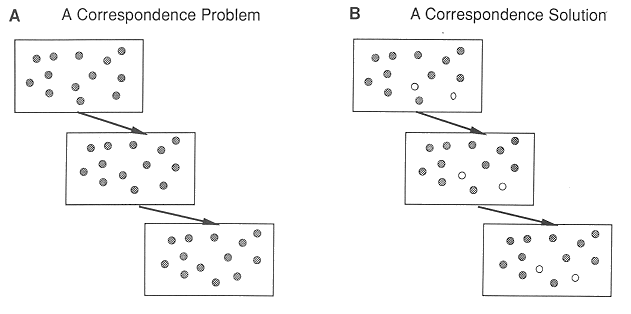
Similar to the study of depth perception, cinematograms composed of random dots are used widely to study psychophysically the motion perception. Many such frames composed of moving random dots are presented in a sequence and the movement of the dots is perceived. The challenge, also similar to that encountered in random dots experiment in depth perception, is the correspondence problem, such as shown below:

Also, in neurophysiological studies of individual cells' responses to motion, a moving object is illuminated stroboscopically at various frequencies. The cells responses will gradually reduce as the gaps between successive flashes increase. Stroboscpically illuminated patterns are similar to the cinematogram used in psychophysical studies in the sense that both of them sample a continuous motion at a certain rate. The perception of motion gets weaker when the rate is reduced.